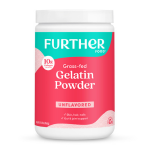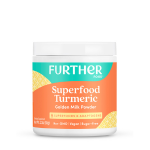The ketogenic diet (also known as keto diet) is touted for its numerous health benefits, from helping people lose weight, improve brain function, plus a lot more. But the specific details of how to implement the keto diet can be overwhelming… especially because it’s often a complete overhaul of the way you eat. If you want to try the keto diet but don’t know where to begin, this article is for you! Sports nutrition and fitness coach Jaclyn Sklaver makes the potentially overwhelming process of starting a keto diet easy with 7 practical and easy to follow tips and tools on how to start a keto diet.
Ketogenic diets are unique from other diets. Why? Because your body must be in a state of ketosis to produce the ketones (or fats) that make the diet work. A well-formulated ketogenic diet consists of high fat, moderate protein and low carbohydrates for an extended period of time. The goal of the keto diet is to bring your body to ketosis, a state where your body gets energy from fat instead of carbohydrates. However, a keto diet is not like a typical diet where you can have a cheat meal and jump right back on track. If you “cheat” and change your eating patterns, you’ll have to start over in order to produce ketones again and return to ketosis.
Once you’ve made the commitment to try a keto diet, it can be intimidating to know just how to start the keto diet. It’s important to do your homework and learn how and what to eat so that you can achieve ketosis and experience all the health benefits that can come through the ketogenic diet. Through my personal experience and in helping my clients use the keto diet successfully, I have found that a few simple tricks will help you as you begin transitioning to the ketogenic lifestyle. Here’s seven tips and tools on how to start a keto diet:
7 TIPS ON HOW TO START A KETO DIET
1. Determine HOW MANY calories and macronutrients you eat each day.
There is a common misconception that you don’t have to count calories in keto, but this is not true. Regardless of the type of diet you are following, calories are always king and the balance between caloric intake and output will always determine if you gain, lose or maintain your weight. Just like any other diet, a ketogenic diet has a set caloric intake.
In addition to calories, macronutrients are also an important aspect of a ketogenic diet because they will determine if you are able to produce ketones. Too many carbohydrates or too much protein will prevent your body from producing ketones for fuel.
Try using the standard ketogenic diet formula of 75 percent fat + 20 percent protein + 5 percent carbohydrates as a great starting point to determine your caloric needs. You can find calculators online at sites such as ketogenic.com, iifym.com or ketogains.com that can also help you with this process. When determining your carbohydrate intake, keep in mind the total is NET carbs. Net carbs are the total carbohydrates minus the fiber and sugar alcohols. You will find them listed on all food labels.
2. Decide WHEN you will eat each day.
Part of a keto diet is considering what you should eat and when to best serve your body’s needs.
While you can choose to plan your day differently, I recommend having a drink in the morning with a high fat content and having your first meal between noon and 1 p.m. Then, eat the remainder of your meals before 9 p.m. This will give you a solid eight-hour eating window. Once you are producing ketones, this diet will be much easier to follow because ketones prevent hunger. You may even have to remind yourself to eat more often!
You have to figure out what works for you, keeping in mind your overall caloric and macronutrient account into consideration along with your lifestyle needs. I have four meals per day plus my coffee in the morning. The morning coffee that I drink contains 24 grams of fat so I subtract that from my daily total. I am very active in the early part of my day, and I like to get a lot of my calories early on. Adding butter and MCT oil to your coffee in the morning helps you produce ketones by not breaking the fast (fat has no impact on your insulin levels).
Intermittent fasting may also be something for you to consider. This method of eating helps you produce ketones, and going longer without eating will help you get into and stay in ketosis faster.
3. Decide WHAT you will eat at each meal.
I suggest planning your meals by choosing the fat source first because a lot of fats have protein in them. For example, cheese has fat and protein. This can be a challenging step to start but once you get the hang of it, things get much easier. Planning your meals ahead of time will help you be organized and more likely to stick with the program. Similar to any other meal plan, it makes life easier to cook larger portions at once and eat them for a few meals. Below are some of my suggested foods to include in your daily diet:
Ideal fat sources: Coconut oil, olive oil, avocado (also a fiber), bacon, salad dressings, organic cheeses, almonds, walnuts and brazil nuts, organic heavy cream and grass-fed butter. Try to stick to vegetable sources for your fats and use animal fats including dairy sparingly.
Ideal protein sources: Any meats, fatty fishes and eggs
Ideal carbohydrate sources: Vegetables, dark leafy greens and cauliflower, prebiotics such as kimchee, artichokes, asparagus and Jicama, cauliflower rice & cauliflower mashed, zucchini noodles, magic noodles, fat head dough. Don’t forget you are eating NET carbs which is your carbs minus the fiber content.
** It is extremely important to get enough fiber every day. Women must have 25g fiber and men should have 38g fiber as a daily minimum.
If you find that you must snack it is important to have keto-friendly snacks on hand.
Keto-friendly snack options:
- Veggie sticks with ranch or blue cheese dressing (Jicama sticks are great because they are loaded with prebiotic fiber.)
- Cheese sticks or string cheese
- Jerky (Look for low sugar options because some brands will cure the jerky in sugar.)
- Brazil nuts
- Hard boiled eggs (I always keep these readily available, along with packets of salt.)
Eating out while on the keto diet is much easier than eating out when you are watching your fat intake. You will find plenty of choices on menus, including Cobb salads, omelets, tuna or chicken salads and burgers in a lettuce wrap. Any steak or meat dish with sautéed veggies makes a good choice as well. When snacking always be aware that fat calories will add up quickly, be careful not to eat too much and go over your daily calorie intake.
4. Add in supplements to help you achieve ketosis:
Supplemental electrolytes
While you can add salt to your food and eat foods that are high in electrolytes, you still may find yourself becoming dehydrated quickly, which can lead to symptoms of the “keto-flu.” Staying hydrated and keeping your electrolyte levels high is your best bet from preventing it. Leafy greens, avocados, cheese and sea salt all contain electrolytes as well. I use a daily electrolyte tablet in my water because I am an athlete and I sweat more than an average person. This prevents muscle cramps while I’m working out.
Medium Chain Triglycerides (MCT) oil or powder
MCTs are the backbones of our fuel, and are available in both a liquid or powder form. These are a cleaner-burning source of fuel that our body uses more efficiently than glucose. There are a few branches on this particular chain, including C6, C8, C10 and C12. You want to limit yourself to eating C8 (caprylic acid) because it converts to ketones faster than C10, and is easier to digest. C12 is lauric acid that mimics a long chain fatty acid in your body. Coconut oil contains MCT (only about 65% MCT) and contains all branches of the molecule chain, including some components that are good to limit. Is it bad to have coconut oil? No! But ideally we want to provide ourselves with the cleanest-burning fuel available—just like your car!
You can also consider using a powder form of MCT oil. A powder form is easier to transport and add to shakes. When liquid MCT oil reaches room temperature or lower it becomes a solid.
Exogenous Ketones
Some companies have started manufacturing exogenous ketones to supplement your ketogenic diet. Exogenous ketones can help stave off hunger, give you energy and help you produce ketones faster during the beginning stages of ketosis. However, steer clear of the products which say you can eat carbs then drink their product and be in ketosis. Look for products that are reasonably priced, provide detailed information on what the ketones will do for you without making crazy promises. Remember however, that these supplemental ketones are not a substitute for producing your own ketones which you get by following the proper nutritional protocol.
5. Make Sure to Hydrate:
Drink a lot of water, even more than you would typically drink. Add electrotypes to your water and in foods such as avocado and coconut. And remember that most alcohol will take you out of ketosis.
6. Exercise
Exercise is great for you in so many ways. It helps to get you stronger, build muscles, and burn calories. It’s also great for your heart and can help reduce stress levels. And, best of all for when you are starting a keto diet, exercising will help your body produce ketones.
7. Ketone blood test kit
You really need to test your blood to know if you are in ketosis. Due to the metabolites that your body produces, the urine strips stop working after about two weeks and will give an inaccurate reading. Once you are in ketosis for a while, you’ll be able to tell from your body if you fall out of ketosis, but early on the blood test strips will help. If you are eating as planned and you have been in ketosis for a while, you shouldn’t have to test daily. But, during the first one to three months, I suggest testing your blood ketones regularly.
Hopefully my tips will help you start the keto diet and help you stay strong through the “keto flu” or adaptation phase. Once you are in full ketosis, you will feel great, have mental clarity and your hunger levels will go down significantly. I hope my tips will help you get there! I think you will find that it’s worth the initial work and changes to your diet.
Summary of how to start a keto diet:
- A well formulated keto diet consists of high fat, moderate protein and low carbohydrates
- The first step when you start a keto diet is to determine how many calories and macronutrients you need to eat daily
- When you start a keto diet, decide what and when you will eat each day
- When starting a keto diet, you may want to consider some key supplements to help you achieve ketosis
- Some supplements to include supplemental electrolytes, MCT Oil or powder and exogenous ketones
- Make sure you hydrate and exercise regularly
- A ketone blood test kit may be helpful to determine if you are in ketosis
- Stay consistent. Consistency is the key to success in any diet
Did you know that Further Food Collagen Peptides are keto-friendly?
Want to read more?
Ketogenic Diet Explained: What Happens When You Eat Too Many Carbs
Ketogenic Diet Explained: Why You Can’t Have “Cheat Days” on a Keto Diet
Ketogenic Diet Explained: 9 Myths About the Ketogenic Diet Debunked by Nutritionist Maria Emmerich
























